|
Tunis Village
|
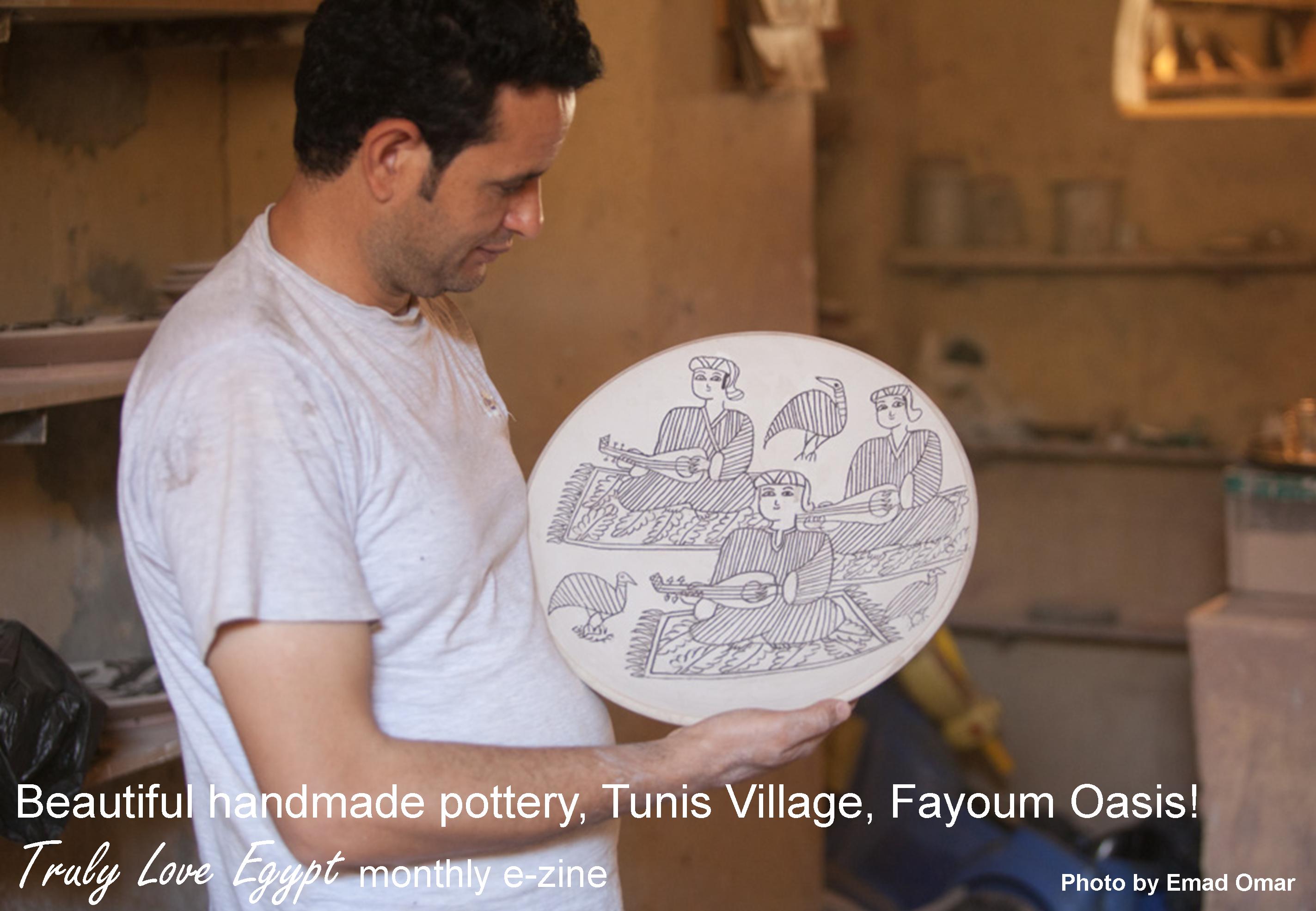
|
Until recently, Tunis was an unknown village overlooking the southwestern coast of a lake inhabited by fishermen. Although it appears - at first glance - like thousands of other Egyptian villages, it has its own charm. It is a small place occupying a green hill facing the waterfront of Lake Qarun, with the vast desert in the background. It is a place that enjoys picturesque nature and peace. In the late sixties of the last century, the Swiss potter Evelyn Boret visited Fayoum with her Egyptian friends. As soon as she saw Tunis, she loved it at first sight and decided to build her own house there, inspired by one of the architectural designs of the engineer Hassan Fathy, the sheikh of contemporary Egyptian architects. When Evelyn began her pottery work in her home workshop, some of the children and young people of the village began to gather around her out of curiosity and observation at first. However, the potter noticed the innate talents of some of the children who used to play with clay and make toys in the form of animals and birds derived from the environment, so she began to encourage them to express their talents. This later encouraged her to establish a school in the village to teach the art of pottery. She built this school in almost the same architectural style inspired by the works of Hassan Fathy.
Evelyn's students - or the Swiss lady as some like to call her - represent a new generation of potters, each with their own workshop, independent artworks and their own exhibitions on both the Egyptian and international levels. This made the village the focus of attention of Egyptian and foreign intellectuals and artists.
Influenced by the charm and beauty of the village, the visual artist and cartoonist Mohamed Abla built his own house including the studio in which he works in Tunis. He also established - in cooperation with his artist friends - an arts center and a caricature museum aiming to display and document this art since its emergence at the beginning of the twentieth century.
Gradually, Tunis became the focus of attention of Egyptian and foreign intellectuals and artists and turned into a well-known center for modern pottery art and an open museum for the style of environmental construction and an important tourist destination. In addition to the pottery school, Tunis includes pottery workshops, a number of eco-lodges, cafes, an arts center, a caricature museum, a horse-riding school, local birdwatching guides, and some safari activities. The village hosts the Tunis Pottery Festival annually, sponsored by the Fayoum Governorate, represented by the General Administration for Tourism Promotion in Fayoum, to which Egyptian and foreign artists, intellectuals, and media professionals are invited. Evelyn may not have realized - when she decided to build her home in Tunis about half a century ago - that she would thereby change the future of the village from an unknown place to what it is today.
|
|
The Waterwheels
|
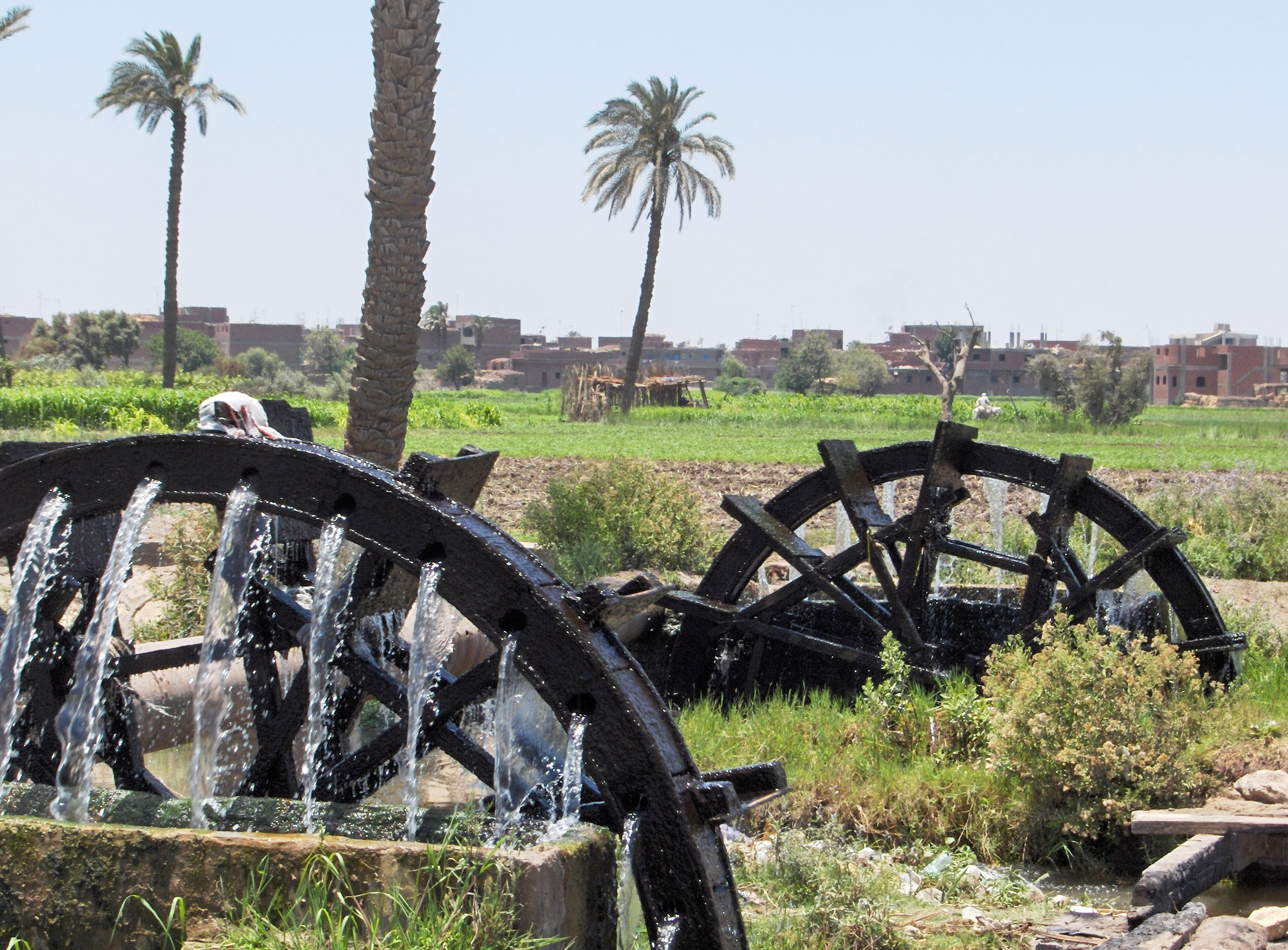
|
Fayoum's waterwheels put the governorate on the tourist map. It is the only governorate distinguished by waterwheels and competed with many tourist sites, the most famous of which are Lake Qarun, Wadi El Hitan, and waterfalls.
Fayoum is the only governorate in Egypt where this type of waterwheel was widespread, in addition to its role in spreading agriculture in the governorate, which preserved this ancient tool even after the emergence of modern irrigation methods. The waterwheel became part of its fabric until it became a symbol of the governorate.
Waterwheels are the icon of the governorate and are present on the governorate's logo. They are one of the traditional irrigation tools and there is no equivalent to them in Egypt.
The waterwheels were invented 2300 years ago in the Ptolemaic era, after the ancient Egyptians turned to agriculture in Fayoum, which is considered the only low-lying governorate. Because the ancient farmer needed to irrigate the land from a lower level to a higher level, he had to think of a way to raise water to the agricultural land. The Ptolemies exploited the Bahr Youssef waterfalls, the main source of water in Fayoum. The Ptolemies used these waterfalls to push the roaring waterwheels, which were made in different diameters, according to the height of the land, to bring water from the bottom to the top by the force of the push, without the need to use bulls, as was the practice in that period, to operate the waterwheels. The slope of the land played a major role in creating natural waterfalls of water of different heights. There are about 200 waterwheels in the governorate, the most famous and largest of which is in the village of Basyouniya, which reaches a diameter of 8 meters. The people of Basyouniya celebrate every 7 years by changing the body of the wooden waterwheel called the coffin, where all the villagers of different age groups gather and witness this event in a big celebration.
|
|
Ali Ruby Mausoleum
|
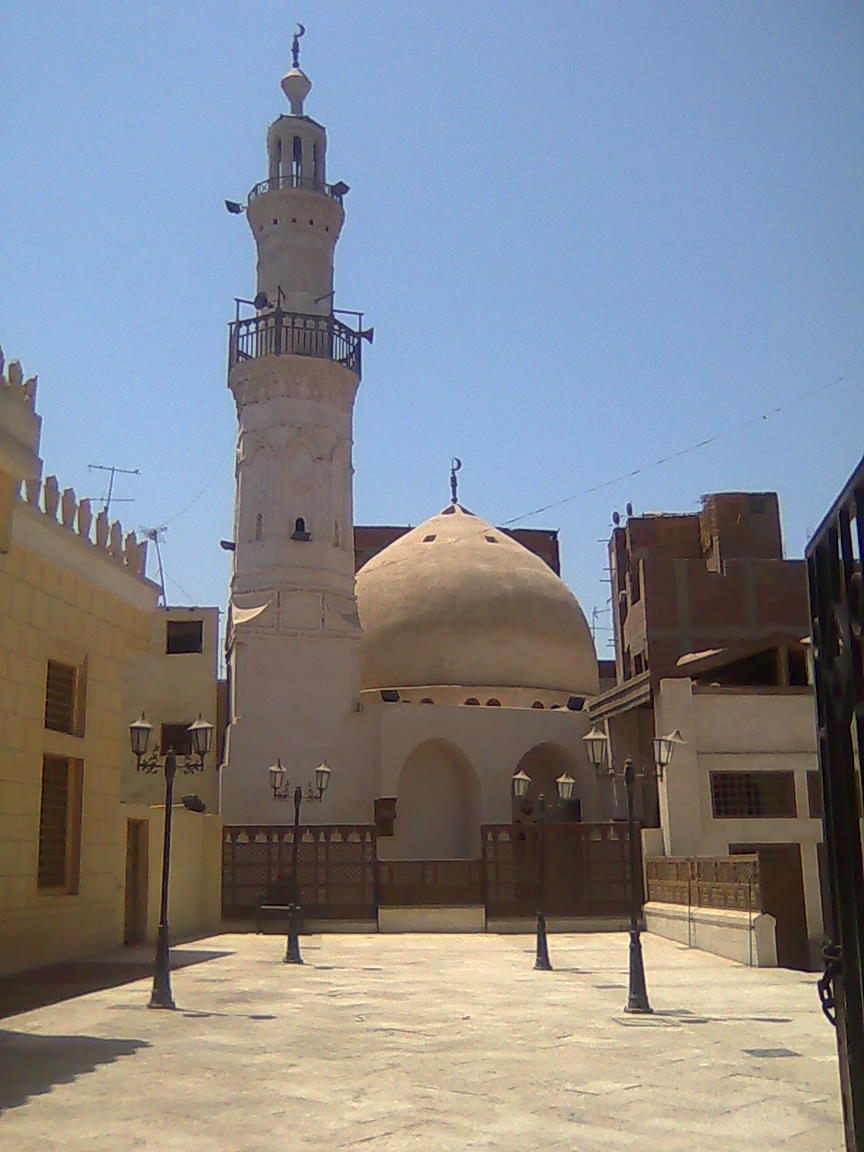
|
Mausoleum and minaret of Sheikh Ali Al-Rubi
The Ruby Mosque and Shrine are located in the Sufi area in Fayoum City, next to the Fire Station Bridge, near the Khawand Aslbai Mosque
The area consists of a mosque, a shrine, and a dome built by Sultan Barquq, in recognition of the honor of Sheikh Ali Al-Rubi, may God have mercy on him, whose lineage is linked to Abbas Ibn Abdul Muttalib, the uncle of the Messenger of God, may God bless him and grant him peace. Sultan Barquq was given good news when he was a prince that he would become a sultan, and in fact he became so, so he decided The building of the mosque for Sheikh Ali Al-Rubi in the year 784 AH in recognition of its beauty and so that lovers of knowledge and lovers of knowledge could meet in it. The Sheikh, and when Sheikh Ali Al-Roubi died in 785 AH, the shrine in which he was buried was completed
The mosque that the Sultan built has now disappeared and the current mosque was built in its place. As for the dome, shrine, and minaret, they remained as they were and were renewed in the Ottoman era. The dome and shrine are like most domes and shrines in Egypt in this period, as their design is a square part, then an octagonal part, then a round part. Then there is a dome with a copper pillar and a minaret. It was built in the Mamluk era and renovated in the Ottoman era in the same style. The dome has copper openings. The interior is for ventilation and lighting.
The dome helmet is characterized by being decorated with holes covered with glass. This style of dome decoration has been followed since the Fatimid era in the Dome of Qus and beyond.
In addition to a pulpit made by Prince Ahmed Katkhuda
Description of the shrine from the outside: It has 4 facades, 3 of which are adjacent to neighboring houses, while the fourth facade, which is the southeastern one, has two doors leading into the shrine.
The shrine does not have a hollow mihrab due to the limited space, and the shrine is not a place for prayer, and the shrine was attached to the Ruby Mosque, so the architect contented himself with defining the qiblah with a small symbolic mihrab made of plaster.
The minaret of the mosque is adjacent to the southern end of the shrine, and it is Ottoman-era, Mamluk style
The shrine received a lot of attention in restoration
|
|
Hanging Mosque
|
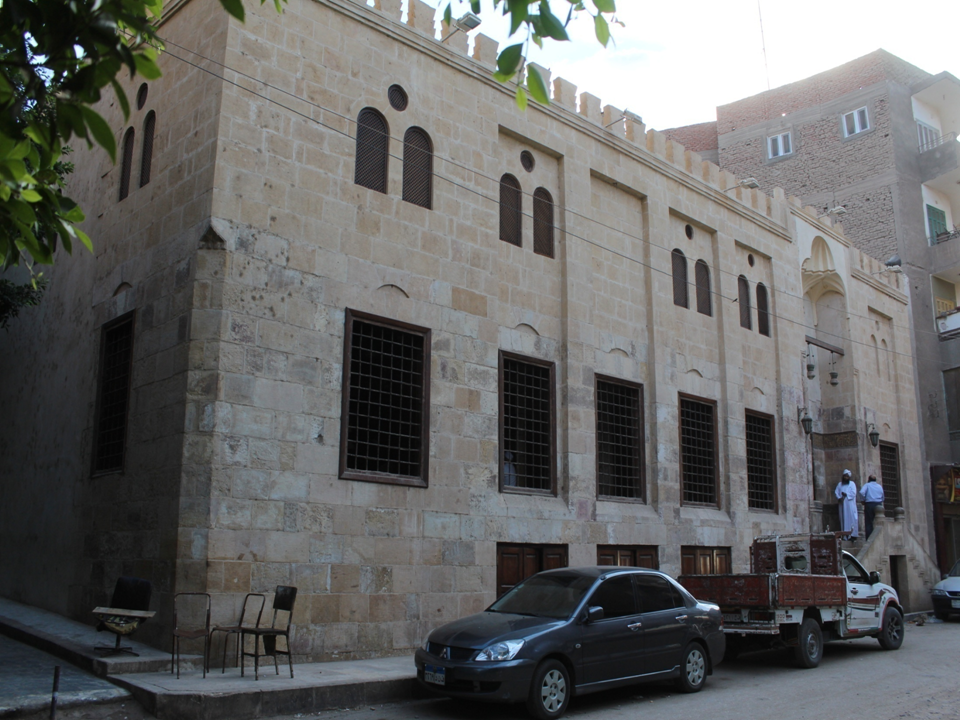
|
On the banks of Bahr Youssef in Fayoum lies the Hanging Mosque, which is considered one of the historical buildings dating back to the early Ottoman era in 1560. It was built by Prince Suleiman bin Hatem, the governor of Fayoum and Behnesawiya, and was called the Hanging Mosque because it was built on a high plateau that can be reached from Bahr Youssef by several stairs. The Hanging Mosque receives special attention due to its historical importance, and in terms of planning and decorations, it resembles the mosques of the Circassian Mamluks. The Hanging Mosque in Fayoum is one of the most important Islamic historical landmarks in the governorate, as it dates back more than 400 years. At first glance, you feel that it is a high-class mosque that represents the fragrance of history and spiritualities that touch the hearts. This is evident in the engravings engraved on its facade and walls, its distinctive shape, and its unique architectural design that makes it unlike any other monument in Fayoum Governorate.
The Hanging Mosque is located in Sheikh Salem district. The mosque consists of an open courtyard surrounded by 4 arcades, the largest of which is the Qibla arcade. In the middle of the Qibla wall is a mihrab in the shape of a semicircle extending upwards. It consists of 7 courses, 35 centimeters high, and the seventh course from the top has a strip of Quranic verses written on it. The mosque also contains 26 windows, and above every two windows there is a small circular window for light, in addition to large windows for ventilation. The front facade of the mosque, the front door, contains 8 small outlets for lighting, and above each two there is a small circular window, which is also for lighting. The height of each window is estimated at about 125 centimeters, and its width is about 45 centimeters. The main entrance is located on the northern facade of the mosque, and there is a staircase at the entrance. The length of the northern facade is 22.40 meters. There are shops below it, each shop has a flat lintel with cylindrical roofs to support the building. They are made of stone and have wooden doors. Above each shop is a rectangular window with iron screens, and wooden shutters are hung on it from the inside. Above each window are simple hanging windows, except for the third window. It also includes 4 corridors; the first contains the qibla and the pulpit, the second contains the front door and ventilation windows, the third contains the back door, and the fourth contains a prayer room for women.
|
|
Qaitbey Mosque
|
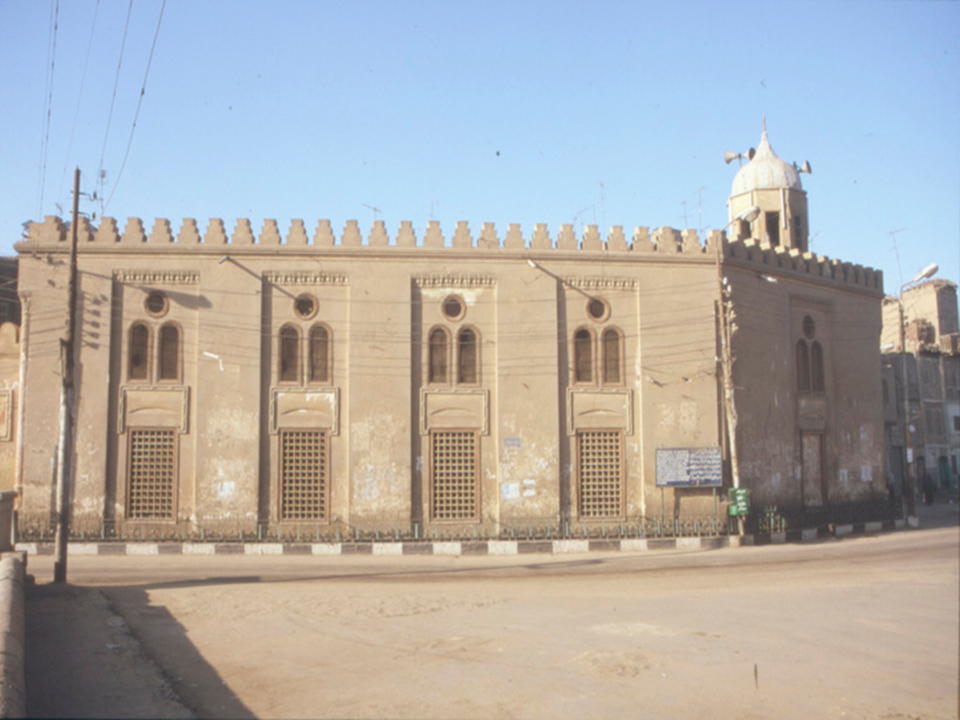
|
It was established during the reign of Khawand Asalbay, the wife of Sultan Qaitbay, after his death, and in the sultanate of his son, Sultan Muhammad, and under the supervision of Sheikh Abdul Qadir Al-Shatouti. The famous Khawand Asalbay Mosque in the Qaitbay Mosque in Fayoum Governorate is considered one of the most famous landmarks of Islamic antiquities in the governorate, and it is one of the tourist destinations for those wishing to visit Islamic antiquities in the governorate, as it was established in the style of It is uniquely architectural, in an important location in Fayoum, and has inscriptions and architectural decoration It is unique and unlike the rest of the mosques in the governorate
It is located in the northwest of Fayoum, near Souq Al-Soufi Street, surrounded by a group of houses
The location of the mosque in the past was located in the northwestern half on the Yusuf Sea, above an arch with two openings, and the other half was above the ground. In the year 1887 AD, a crack occurred in this mosque, and in the year 1893, the half of it located on the arch collapsed as a result of a strong flood, and the other half cracked, but it was preserved by the Committee for the Preservation of Arab Antiquities. Its area became limited to the part built on the land, which is the current area
The layout of the mosque consists of a central courtyard surrounded by 4 corridors, the largest of which is the Qibla corridor
In the qibla wall there is a corner of the old mihrab that was built during the reign of Al-Nasir Muhammad bin Qaytbay. The wall also includes a Qur’an chair, which is from the era of construction and is wonderfully decorated. As for the minaret of the mosque, the mosque in the past had a minaret built of stones, of which only a graceful staircase remains. It seems that this minaret was from The architectural proportions are no less magnificent than the minarets of Cairo, especially the minarets of the era of Sultan Qaytbay
|
|
The Silians
|
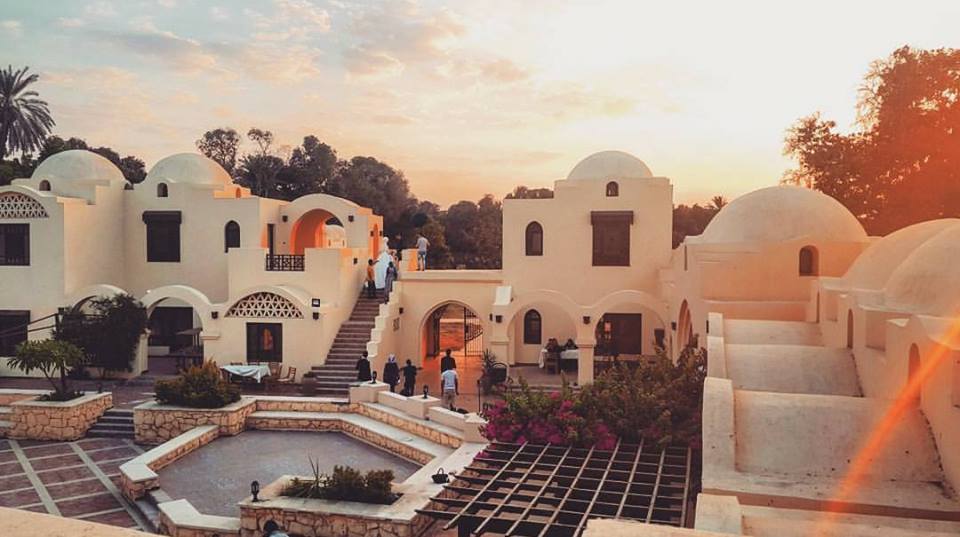
|
Ain El-Seleen tourist area in Fayoum Governorate is considered one of the most famous tourist attractions in Fayoum, as it enjoys greenery, green terraces, water wastes, the old mill, and water springs. It is also distinguished by its hotels, restaurants, and markets for tourist products. Before and after all of this, the beauty of nature, the pleasant calm, and the environmental purity. In it, nature truly differs to have a special, distinctive, and pleasant taste.
Ain El-Seleen is located in a green area with abundant trees in the heart of the Fayoum Delta, where fruit gardens and orchards surround the terraces that fill the place. It is halfway between the city of Fayoum, which is located 8 km away, and Lake Qarun, which is located 13 km away.
This green tourist area in the center of Senuris in Fayoum, which was one of the most important attractions years ago, and a destination for school and university trips for decades past, has been on the throne of domestic tourism.
It was a destination for film and TV series directors, thanks to its picturesque nature, fresh natural air, water dams, the old mill that used to grind grains, water springs, and markets. All of this beauty changed after the 1992 earthquake.
Ain Al-Selyeen began flowing in the thirties, adding a wonderful tourist destination to Fayoum. Ain Al-Shaer also flowed in the seventies, adding depth and breadth to the area. A bridge was built on the canal overlooking the stream, connecting it to Al-Selyeen, which added beauty to the area.
Healthy water used to flow from its four sulfur springs, as confirmed by the marble sign that still remains and bears confirmation from a laboratory in Switzerland, attesting that it is suitable for drinking from both the chemical and bacteriological points of view.
But the biggest problem facing Ain Al-Silyan was the complete cessation of pumping from the sulfur springs. This was due to the impact of the earthquake that was centered north of Fayoum in 1992. Others believe that converting agricultural lands whose groundwater was a source of feeding the springs into buildings
|
|
Hawara Pyramid
|
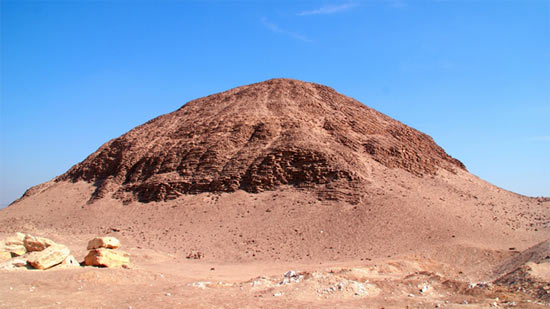
|
The Hawara Pyramid was built using sun-dried bricks made from Nile clay and straw. When it was built, it was covered from the outside with limestone. The height of the pyramid was about 58 meters, and the length of each of its sides was about 100 meters. As for the entrance, it was on the southern side and led to a complex network of openings that reached the burial chamber, but this entrance is now closed.
Labrant Palace: Attached to the southern side of the pyramid was the large funerary temple of Amenemhat, of which only a large area remains covered by fragments of stones, thin granite, and limestone columns. This is likely to be the famous labrant building which travelers spoke of with unlimited admiration.
Strabo stated that the length of this building was about 200 meters and consisted of two floors, and that the number of rooms reached 1,500 rooms.
In the ruins of this building, a wonderful statue of King Amenemhat III was found in the Egyptian Museum.
discovered southeast of the pyramid in the tomb of Princess Neferoptah the remains of a small pyramid containing the body of Princess Neferoptah, the daughter of King Amenemhat III. In it, a large coffin of pink ranite, some silverware, and a wonderful collection of jewelry made of gold and semi-precious stones were found. The gem is currently preserved in the Egyptian Museum
A cemetery of mummified crocodiles was found 500 meters northeast of the pyramid, which symbolizes the god Sobek, the god of the region. Among the most important things found in this cemetery were personal pictures that were drawn and colored and then placed on the faces of mummies, known as Fayoum pictures or Fayoum faces, which date back to the Greek and Roman eras.
|
|
 |